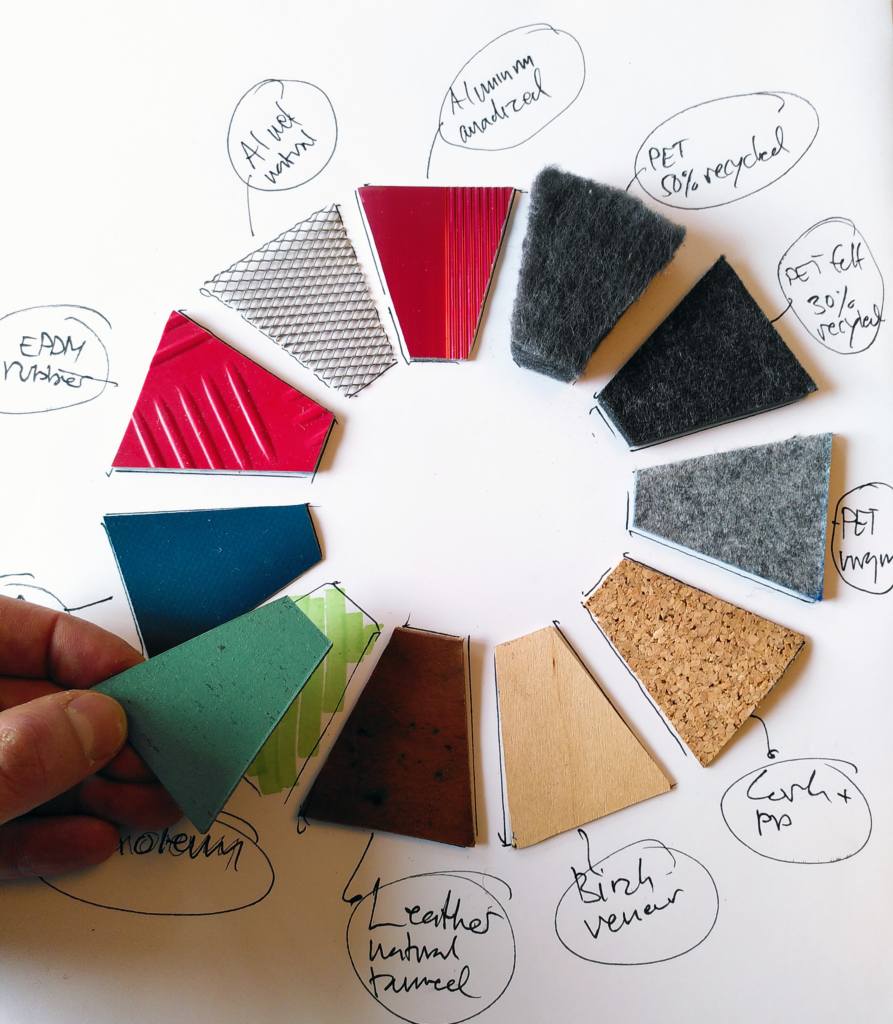Materials are the building blocks of our economy. Choosing the right materials and managing them efficiently are crucial steps in increasing the potential for circularity.
Here are some key considerations:
Material suitable for a circular economy should be….
Resource efficient to produce cradle to gate. Here less is more, materials should require little energy, emit less Co2, use less water, and create less waste.
Edure for longer: Here less is not necessary, rather more resistance for physical and visual wear and is preferable to be based on already used materials that can be reused in a new application without too many additional resources. Her production waste be considered, but even better if a used leather or airbag fabric can be resewn and used again and again.
In line with nature’s principles, as with biobased ingredients that can biodegrade, are non-toxic and do not release problematic particles during the material’s lifecycles.
Material recycled in as closed material loops as possible, meaning that materials should contain recycled ingredients that can be recycled again without losing material quality and values.

Building a circular material palette means carefully choosing materials that are efficient to produce, long-lasting, safe, and can be recycled multiple times. Just like your favorite basic clothes in your wardrobe, circular materials are a small selection of well-known options that work for many purposes.
